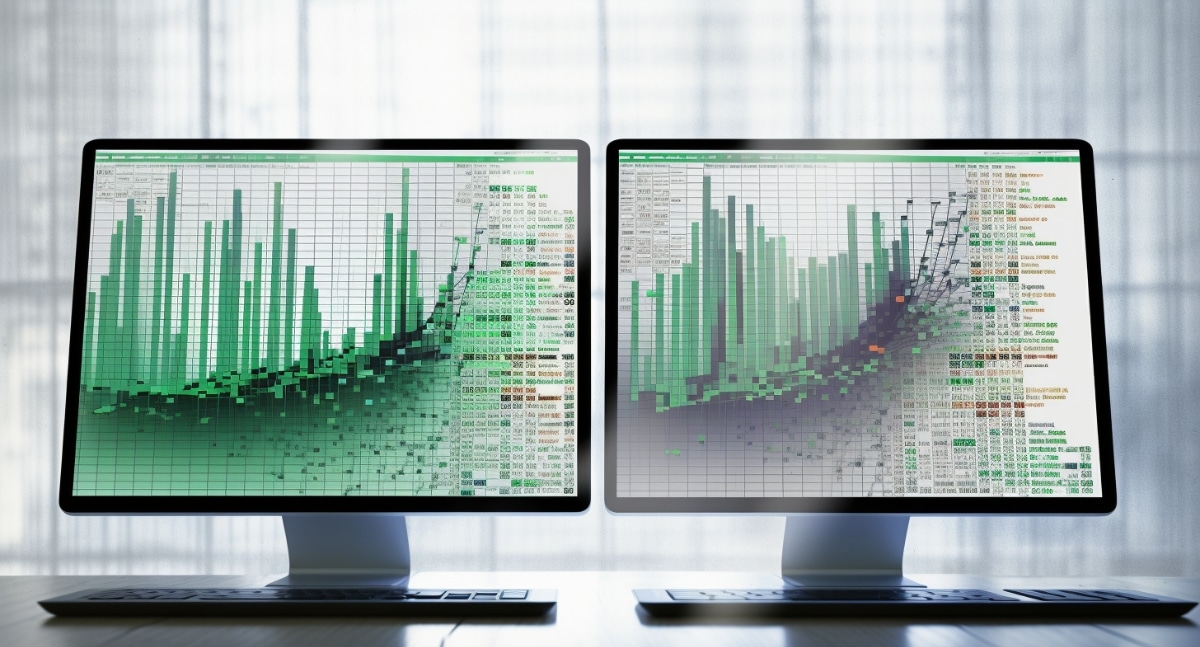Easily Compare Two Excel Sheets in One Workbook

When working with data in Excel, it's common to have to compare different sets of data within the same workbook. Whether you're a financial analyst, a data scientist, or just someone who often deals with spreadsheets, knowing how to easily compare two Excel sheets can significantly boost your productivity and accuracy. This blog post will guide you through various methods to compare Excel sheets efficiently, ensuring you can quickly identify discrepancies, track changes, or even spot subtle differences in datasets.
Why Compare Excel Sheets?

Comparing Excel sheets is not just about finding errors; it’s about:
- Data Integrity: Ensuring data consistency across multiple sheets or time periods.
- Change Management: Tracking revisions, updates, or errors introduced in data over time.
- Audit and Compliance: Verifying financial or operational data for accuracy, regulatory compliance, or auditing purposes.
- Data Analysis: Highlighting trends, anomalies, or patterns for deeper insights.
Manual Comparison


For small datasets, manual comparison can be straightforward:
- Open the workbook containing the sheets you want to compare.
- Scroll through each sheet side by side or place them in different windows (by right-clicking on the sheet tab and choosing “New Window”).
- Look for differences by visually scanning or by using Excel’s search function.
⚠️ Note: Manual comparison is time-consuming and error-prone for large datasets or when numerous changes need tracking.
Using Conditional Formatting


Conditional Formatting is a powerful Excel feature for comparing sheets:
- Select the data range in one sheet you want to compare.
- Go to the “Home” tab, click on “Conditional Formatting,” and select “New Rule.”
- Choose “Use a formula to determine which cells to format.”
- Enter a formula like
=A1<>Sheet2!A1to compare cell A1 with the corresponding cell in Sheet2. - Set the format to highlight cells that differ.
This method quickly visualizes differences, making discrepancies stand out in color.
| Method | Effectiveness | Best For |
|---|---|---|
| Manual | Low for large datasets | Small datasets or quick checks |
| Conditional Formatting | Medium | Quick visual comparison |

VBA Scripting for Comparison

For more complex comparisons or when dealing with massive datasets, consider using VBA scripts:
- In Excel, press Alt + F11 to open the VBA editor.
- Insert a new module and paste the following VBA code:
- Run the macro to highlight differences with a yellow background.
Sub CompareSheets()
Dim ws1 As Worksheet, ws2 As Worksheet
Dim rng1 As Range, rng2 As Range
Dim rowCount As Long, colCount As Long, i As Long, j As Long
Set ws1 = ThisWorkbook.Sheets(“Sheet1”)
Set ws2 = ThisWorkbook.Sheets(“Sheet2”)
rowCount = ws1.UsedRange.Rows.Count
colCount = ws1.UsedRange.Columns.Count
For i = 1 To rowCount
For j = 1 To colCount
If ws1.Cells(i, j) <> ws2.Cells(i, j) Then
ws1.Cells(i, j).Interior.Color = RGB(255, 255, 0)
ws2.Cells(i, j).Interior.Color = RGB(255, 255, 0)
End If
Next j
Next i
End Sub
This script efficiently automates the comparison process, making it ideal for repeated or large-scale comparisons.
Add-Ins and Third-Party Tools

If you find Excel’s native capabilities limiting, consider using add-ins like:
- Compare Two Worksheets! - An Excel add-in for quick and detailed comparison.
- Synkronizer - A tool that offers comparison with colored highlights and reporting options.
🛠️ Note: Add-ins can extend Excel's functionality, but they might require additional licenses or setup.
Conclusion

Comparing two Excel sheets within the same workbook is essential for maintaining data accuracy, tracking changes, and making informed decisions based on data analysis. From manual reviews to advanced VBA scripting or using third-party tools, there’s a method to suit every level of Excel proficiency. By choosing the right technique, you ensure not only a more efficient workflow but also high-quality data management that can withstand scrutiny from audits to internal reviews.
Can I compare two Excel sheets without using VBA?

+
Yes, you can compare Excel sheets manually or using Conditional Formatting as described earlier in this post. These methods don’t require any programming knowledge.
What if my datasets are extremely large?

+
For very large datasets, manual comparison becomes impractical. Using VBA scripts or third-party tools can significantly speed up the process and ensure accuracy.
Are there online tools to compare Excel sheets?

+
Yes, several online tools exist that allow you to upload Excel files for comparison. They often provide detailed reports on differences but might have limitations on file size or number of rows.